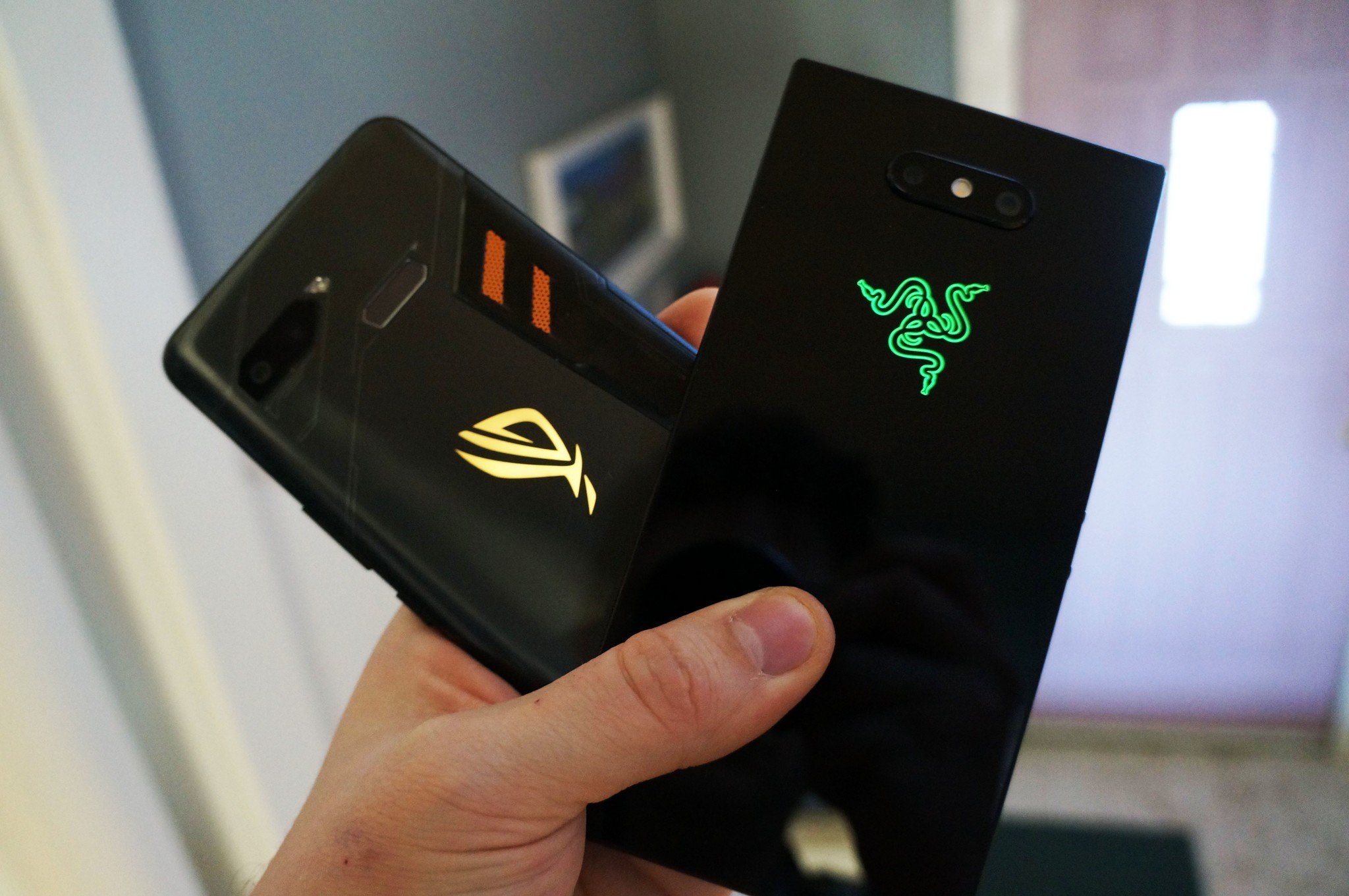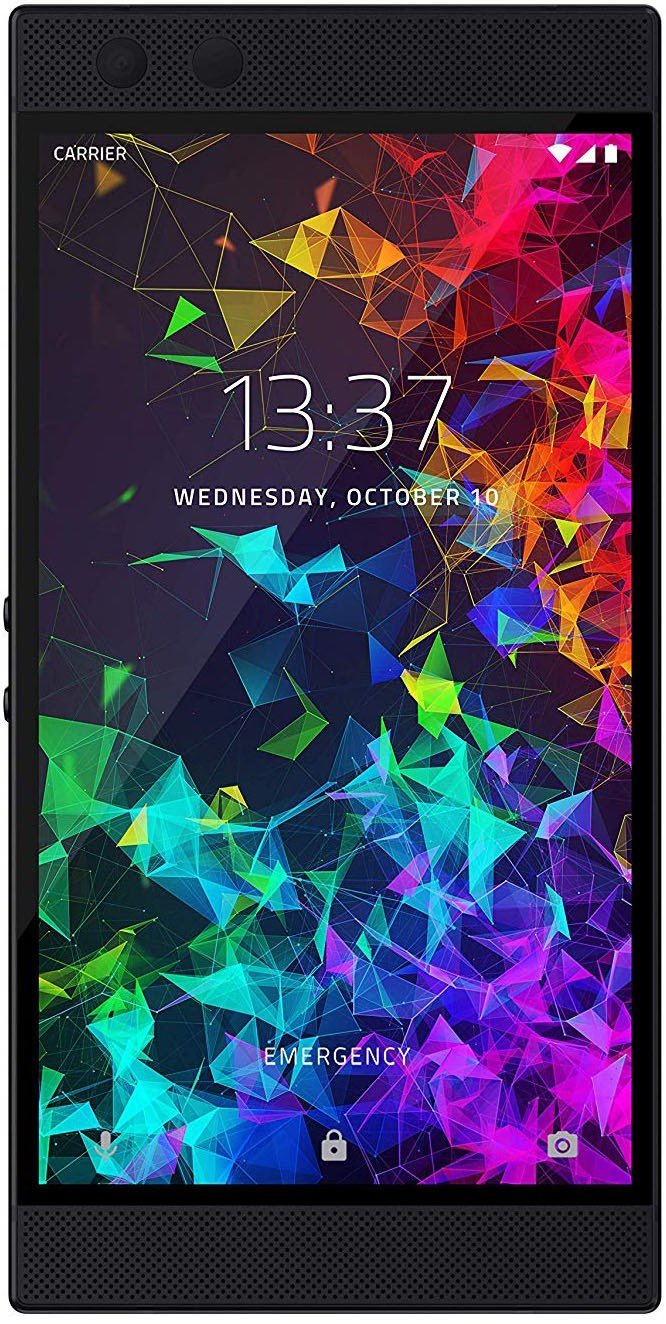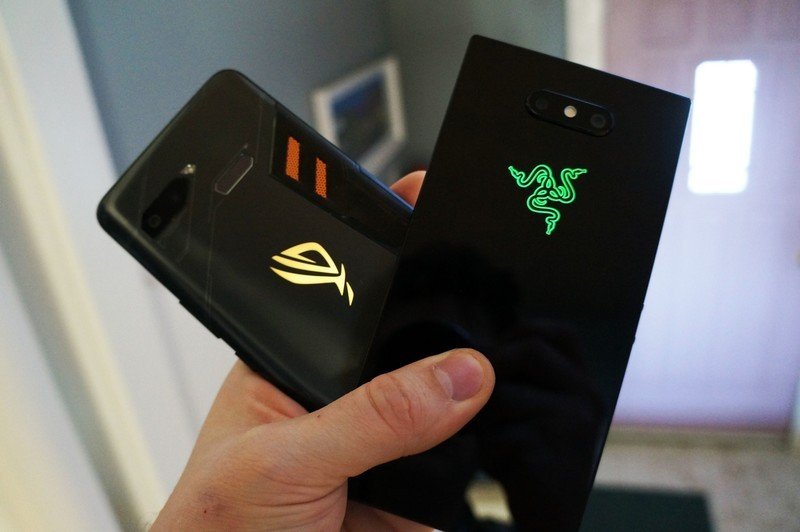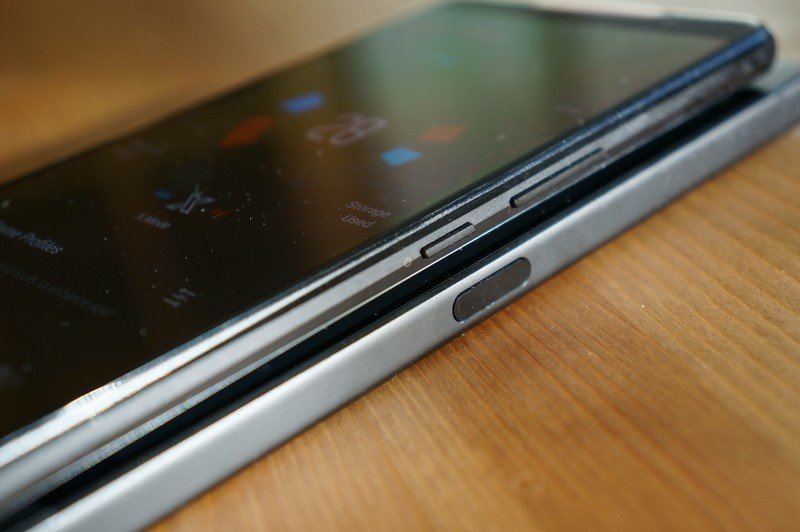Razer Phone 2 vs. ASUS ROG Phone: Which should you buy?

Razer Phone 2

Razer has done a great job building on the successes from its first phone and the Razer Phone 2 stands out for all the right reasons among the phones released in 2018. It's a powerful performer for gaming and watching media, looks cool as hell in your hand and also functions quite well as a daily-use smartphone.
Razer Phone 2
Reasons to buy
Reasons to avoid
ASUS ROG Phone

ASUS has taken its Republic of Gamers brand philosophy and delivered a solid gaming smartphone that brings a ton of features to the table — both for gaming and for daily use. It's great to see ASUS experiment with untraditional design ideas and I hope they continue to develop and refine their vision as Razer has.
ASUS ROG Phone
Reasons to buy
Reasons to avoid
Gaming smartphones are still a relatively new concept, but 2018 saw the first true competition in this emerging product space between the ASUS ROG Phone and the Razer Phone 2. These are two phones that follow vastly different design philosophies in an attempt to serve hardcore mobile gamers with the best specs and the most comfortable gaming experience — and the genuinely exciting part is how both are very successful at this in unique ways.
Razer Phone 2 vs ASUS ROG: Specs and design
Razer and ASUS are common competitors in the PC gaming marketplaces, so it's somewhat fitting to see these two companies compete in the emerging gaming smartphone space as well.
Razer is still a relative newcomer to the smartphone industry making it clear to see how they addressed and fixed the issues that held back the first Razer Phone from being a reliable daily-use device. ASUS, on the other hand, is no stranger to the smartphone market. The ASUS ROG Phone is branded separately from its ZenPhone lineup, but it uses a skinned version of its ZenUI software and went all-in with the Republic of Gamer brand philosophy to create a gaming smartphone that packs in so many features, many of which you will likely never see on another phone. .
Beyond the radically different design choices on the outside, these two phones are remarkably similar in terms of core internal specs and as you'd expect they're quite impressive.
| Header Cell - Column 0 | Razer Phone 2 | ASUS ROG Phone |
|---|---|---|
| Operating System | Android 8.1 Oreo | Android 8.1 Oreo |
| Display | 5.72-inches Sharp IGZO 2560 x 1440 resolution 120Hz refresh rate with UltraMotion sync Wide Color Gamut (WCG) Corning Gorilla Glass 5 | 6.0-inch 18:9 AMOLED panel FHD+ (2160x1080), HDR 90Hz refresh rate Corning Gorilla Glass |
| Chipset | Qualcomm Snapdragon 845 | Octa-core Qualcomm Snapdragon 845 |
| GPU | Ardreno 630 | Adreno 630 |
| RAM | 8GB | 8GB |
| Storage | 64GB | 128GB / 512GB |
| Expandable storage | microSD | No |
| Battery | 4000mAh | 4000mAh |
| Rear Camera | 12MP AF ƒ/1.75 Wide 12MP AF ƒ/2.6 Zoom Dual PDAF Dual tone, dual LED flash | Value |
| Front Camera | 8MP f/2.0 | 8MP f/2.0 |
| Connectivity | 802.11 a/b/g/n/ac Bluetooth 4.2 NFC | 802.11 ac 2x2 MIMO Bluetooth 5.0 NFC |
| Biometric | Fingerprint scanner (side power button) | Fingerprint scanner (back of phone) Face detection |
| Charging | USB-C QuickCharge 4.0+ Qi wireless charging | USB-C QuickCharge4.0 ASUS HyperCharge |
| Water resistance | IP67 | IPX4 |
Both phones are absolute beasts when it comes to hardware and computing power, offering the latest available Snapdragon 845 processors with 8GB of RAM. These are both bigger phones with the ASUS offering slightly more screen size, and both phones offer really fast performance for gaming with Razer delivering up to 120Hz refresh rate and ASUS offering up to 90Hz. Lastly, both phones feature front-facing speakers which are great for both gaming and media streaming purposes.
Get the latest news from Android Central, your trusted companion in the world of Android




The Razer Phone 2 is unapologetically large and monolithic with its all-black look that's complemented nicely by the glowing Chroma logo on the back. It features a glass back to allow for wireless charging and feels heavy and solid in your hand. Despite all that glass, the good news is that the corners and edges are entirely aluminum, meaning you should avoid the front or back glass shattering if your phone drops and lands on a corner.
ASUS went for a far more futuristic look — where other phone makers aim for an unbroken look where everything seamlessly flows together, ASUS has opted for stylish lines and mixed materials on the back while also incorporating a customizable RGB logo. Another standout feature is the tandem USB-C ports located on the side of the phone, which are used to connect some gaming accessories ASUS launched alongside the ROG Phone. I've only tested the optional fan accessory that comes with the phone and it's interesting, if only for the convenience of being able to charge your phone and plug in headphones while playing a game without the cables getting in the way of your hand.
In terms of look, feel, and utility, these are starkly different approaches to phone design.
I want to discuss how each phone incorporates the fingerprint scanner because I really love Razer's decision to carry on the Nextbit design legacy of building it into the power button on the side of the device. My thumb just naturally lands on the scanner whenever I pick up the phone and that's exactly what I want from a fingerprint scanner. In contrast, I've found it's too easy to lose track of the fingerprint scanner on the back of the ROG Phone. It's fast when you find it but the placement feels a bit little off in my opinion. To compensate, ASUS has also included superfast face detection as an alternate way to unlock your phone.
ASUS and Razer really diverge when it comes to handling internal storage. Razer offers just 64GB with a microSD card slot for storage expansion, while the ROG Phone is offered with 128GB and 512GB storage options — but no microSD slot. Including more storage might in part explain why the ASUS ROG Phone is more expensive, but not including support for microSD might have been a big misstep since Razer Phone 2 users can add an extra 256GB of storage as needed for well under $100. (Why you would ever actually need that much storage is its own separate question.) ASUS does include support for dual SIM cards instead, which is a popular feature in India and other Asian markets but of no particular use to me.
Razer Phone 2 vs ASUS ROG Phone: Software

Both the Razer Phone 2 and ASUS ROG Phone ship running Android 8.1, so if you've been enjoying the latest version of Android on a Pixel device you will have to reacquaint yourself with the old ways of home screen navigation. The good news is that Android Oreo still holds up just fine and runs well. Razer only really offers a coat of paint to the Android operating system and only offers the Chroma, Theme Store, and Cortex apps pre-installed for customizing the look and performance of your phone.
Razer's simplistic approach to software really shines, while ASUS offers a feature-full but cluttered user experience.
ASUS, meanwhile, lets you customize and control just about everything on the phone — you're even able to sync the RGB of any other ASUS PC hardware you own to your phone because... why not, I guess? The settings menu run deep with great optimizations and features, but it's also a bit overwhelming at times and ASUS fails to properly introduce these features or explain their utility.
This is best exemplified in the swipe down control panel which features a whopping 29 toggles for nearly every feature the phone offers. Having a plethora of features available isn't a bad thing, but having to scan through multiple pages of icons just to find the "Do Not Disturb" toggle switch is a bit of a pain. Of course, you can customize the control panel but I feel like it would be better if ASUS had you set up your own control panel during the initial set up process with the quick features you actually want rather than throwing them all at you at once.
In terms of software, Razer wins hands down simply by keeping things about as stock as you'd expect from a company that's new to developing for Android. The Razer Phone 2 includes Nova Launcher by default, and that means you're able to dive in and customize things just how you like it. ASUS also includes Nova Launcher on the ROG Phone but boots up with a ROG version of the ZenUI launcher by default. Needless to say, I immediately switched to Nova and never looked back.
Another weird intermittent issue I had with the ASUS phone involved Bluetooth audio. Every so often I connect the phone to a Bluetooth speaker and in-car receiver and the audio is garbled and quiet. It's strange because I've replicated the issue across multiple Bluetooth devices I've never had any other issues with these Bluetooth devices with any other phones I've tested. Sometimes it connects and sounds just fine, and others it sounds like the audio is being horribly distorted. It's not a huge deal in the big picture of things, but it occurred enough times to warrant a mention considering I've never experienced the issue with the Razer Phone 2.
Raze Phone 2 vs ASUS ROG Phone: Gaming performance

For testing purposes, I tried playing the same selection of games on both the Razer Phone 2 and ROG Phone. I mostly stuck with PUBG Mobile, VainGlory, and GearClub as those are all games that support higher refresh rates and can really put a phones specs through the paces. At their best, both phones performed amazingly well. For the Razer Phone, things are pretty straightforward. The phone simply handles anything thrown at it with ease and I've had nary an issue with it in terms of gaming performance.
Both phones handle the most graphics intensive games with relative ease, but the Razer Phone 2 has proven to be the more reliable performer.
ASUS absolutely deserves serious props for its Game Genie settings, which are the best gaming settings I've seen on Android. You're able to quickly optimize the phone's RAM performance and monitor performance details to see how hard your CPU and GPU are working, the current frame rate, and your phone's internal temperature in real time as you play.
You can create custom macros to automate input sequences for your games (cheater!), or set up AirTriggers, which let you use pressure sensors on the side of the phone as custom mapped button inputs. You can even screen record or start live streaming straight to YouTube or Twitch! For all of these great features built into the ROG Phone, it ultimately caused me the most moments of frustration while actually playing games.
It wasn't a persistent performance issue, but the little gameplay glitches, input lag, or occasional app crashes seemed to only occur when gaming on the ROG Phone. I'm not sure what was ultimately the culprit — the phone itself or the app creating the issue — but it really took away from the overall experience.
It really sucks because ASUS otherwise delivers so much good stuff here for hardcore mobile gamers and the ASUS ROG Phone is a genuinely exciting phone that's positioned to take full advantage of the latest mobile gaming offerings. All in all, the Razer Phone 2 simply provided the more stable and reliable gaming experience at a better price and you just can't beat that.

Razer has ironed out the ironed that held back its first phone
The Razer Phone 2 is a reliably fast device that offers a distinct look and feel. It can't match all the unique gaming features found on the ROG Phone, but it has proven to be the more consistent performing gaming phone at a better price point.

The ASUS ROG Phone is a fast and stylish gaming phone
ASUS has been in the smartphone game longer than Razer, and you can tell from the sheer number of features crammed into the ROG Phone. It's an impressive device with an intriguing set of accessories available to enhance the experience, but its also notably more expensive.

Marc Lagace was an Apps and Games Editor at Android Central between 2016 and 2020. You can reach out to him on Twitter [@spacelagace.
